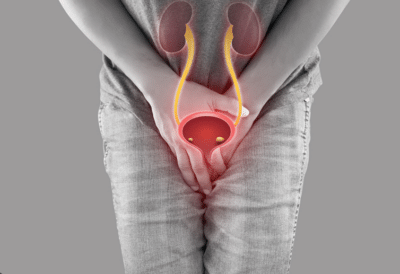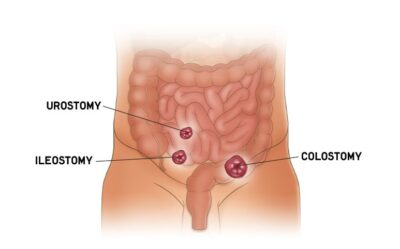Stoma Care
Your Guide to Diet and Exercise with a Stoma
Stoma Diet Tips and Re-engaging in Physical Activity Post-Surgery
If you’re living with a stoma, maintaining a balanced diet and engaging in regular exercise remain pivotal aspects of your well-being. While you may need to make some adjustments to accommodate your stoma, staying active and eating healthily can have a positive impact on your overall health. In this guide, we’ll explore dietary considerations and exercise recommendations for individuals with stomas.
Diet and Your Stoma
Understanding what to eat and drink with a stoma can be confusing, especially immediately after surgery when your bowel needs time to heal. After this initial period, you can gradually reintroduce your regular foods. Here are five key considerations when planning your meals:
Fibrous Foods: Some individuals may be advised to steer clear of fibrous foods and tough-skinned items like sweetcorn, popcorn, peas, and potato skins to prevent potential blockages in the bowel.
Fizzy Drinks: If you experience excess gas production, it’s best to avoid carbonated beverages.
Individual Variation: Everyone reacts differently to various foods, whether they have an ostomy or not, so it’s essential to gauge your own body’s response.
Trial and Error: Experiment with small portions of different foods to understand how your body reacts.
Diverse Diet: Don’t limit your food choices unnecessarily. Most ostomates can return to a regular, healthy diet over time.
For many people, having an ostomy provides relief from painful bowel symptoms and allows them to enjoy a normal, balanced diet. Keep reading for more detailed information on diet considerations based on your specific stoma type.
Exercise and Your Stoma
Finding an exercise routine that suits your body is crucial for managing life with a stoma. Living with a stoma can be challenging enough without the added stress of wondering if you’re doing the right thing by staying active. Remember, exercise isn’t limited to intense workouts – it encompasses a wide range of activities.
Here are some exercise-related insights:
Can You Exercise with a Stoma?
Absolutely, you can! But before you start, consider these points:
Consult Your Healthcare Specialist: Seek advice from your healthcare specialist to choose the most suitable activity based on your current health status.
Post-Surgery Period: It’s advisable to avoid heavy lifting or strenuous exercises for the first 12 weeks after surgery or until your colorectal specialist deems it safe. After this initial period, being an ‘active ostomate’ can benefit your overall health, just like it does for everyone else.
Start Gradually: Begin with gentle activities, such as 30 minutes of daily walking, and progressively increase your level of activity.
Supportive Resources: Organizations like the Colostomy Association offer valuable advice on staying active with an ostomy.
Consider Core-Building Exercises: Pilates and Yoga can help strengthen your core muscles, but be sure to wear a support band or belt around your stoma to prevent hernias. Your stoma nurse can assist you in finding the right fit.
Diet Considerations Based on Stoma Type
Colostomy: With most of your colon intact, you can enjoy a ‘normal’ healthy balanced diet. Aim to drink 6-8 glasses of fluid daily (1.5 – 2 litres). Keep in mind that constipation or diarrhea episodes can occur with a colostomy, and certain food groups are more likely to trigger them.
Ileostomy: Maintaining adequate hydration is crucial for ileostomy patients. Drink plenty of fluids throughout the day. You may lose essential minerals and salts, so consider rehydration solutions like ‘St Mark’s’ or oral rehydration solutions like Dioralyte. Ileostomies are more susceptible to blockages, so thoroughly chew fruits and vegetables with tough skins or remove the skins.
Recognizing Blockage Symptoms:
It’s essential to be aware of blockage symptoms, including:
- Lack of stools
- Extremely watery stools
- Abdominal pain and cramping
- Nausea and/or vomiting
- Bloated stomach
If you experience blockage symptoms, stop eating but continue drinking fluids to facilitate the blockage’s passage. If symptoms persist for more than 12 hours, contact your stoma nurse for guidance. Severe symptoms like vomiting and intense stomach pain require immediate attention at your nearest A&E department.
Dehydration Awareness
Individuals with ileostomies or high-output colostomies are at risk of dehydration. Ensure you consume at least 2 litres of fluids daily, but adjust based on your output. Dehydration symptoms include infrequent urination, dark-colored urine, thirst, dry mouth, dry skin, and headaches.
Foods Impacting Stool Consistency
Foods causing loose stools include fruits, vegetables, salads, alcohol, fizzy drinks, chocolate, fruit juice, fish, spicy food, nuts, caffeine, high-fiber foods (e.g., bran), and saturated fats or processed foods.
Foods Affecting Odor and Gas
Foods contributing to excess odor and gas include onions, garlic, fizzy drinks, fish, beans, pulses, cucumber, peas, kale, broccoli, cauliflower, sprouts, cabbage, alcohol, and chewing gum.
Foods that Thicken Output
To thicken output, consider foods like jelly babies, marshmallows, bananas, rice, pasta, mashed potatoes, toast, porridge, peanut butter, and applesauce.
In conclusion, navigating diet and exercise with a stoma requires attention to individual needs and preferences. Always consult your healthcare specialist and stoma nurse for personalized guidance. A well-balanced diet and regular physical activity can contribute significantly to your overall health and quality of life as an ostomate.


